The setting in which we eat has a significant impact on what foods we choose to eat and how much we enjoy them. For example, you may enjoy eating an ice cream on the beach during summer, but if you were to eat the same ice cream on a cold winter’s day it might not taste as good or bring the same level of enjoyment. How well a food fits with its setting is called ‘situational appropriateness’.
Factors including the location, specific place within a location, occasion, and who you eat with, can all influence our food choices and satisfaction.

You would probably enjoy eating an ice cream at the beach more than in the cold.
PBMAs are affected by situational appropriateness
Based on previous research, consumers generally find it appropriate to consume plant-based meat alternatives (PBMAs) when they are alone or with friends, in a café or restaurant, or during a family meal on a weeknight. However, they consider PBMAs less suitable for a Sunday meal, special occasions, at a barbecue party, in a pub, or when dining with an acquaintance.
It is not well understood why PBMAs are considered more appropriate in certain situations but there are several possible explanations. For example, at a BBQ or when dining with acquaintances could be considered less appropriate if you didn’t want to attract attention or feared being judged for your food choices. For those who are unfamiliar with cooking PBMAs, a café or restaurant where the food is prepared by a chef could be considered a more appropriate setting. People may also be less sensitive to the price of PBMAs when eating in a restaurant. PBMAs are processed products therefore could be considered less appropriate for special occasions where a high-quality meal is desired e.g., a steak.
Where do consumers eat plant-based meat alternatives to meatballs?
To understand where consumers from our Feast consumer database find it appropriate to eat a typical PBMA, we ran a short survey with 180 respondents. We asked where they would likely eat:
a) a dish of spaghetti and meatballs
b) a dish of spaghetti and plant-based alternatives to meatballs.
Consumers are most likely to eat meatballs and plant-based alternatives at home
Both meatballs and plant-based alternatives to meatballs are most likely to be eaten at home or at a restaurant, and least likely to be eaten in a pub. Possibly spaghetti and meatballs are not considered typical pub food making this an inappropriate setting for the dish in general, not just plant-based alternatives to meatballs.
Interestingly, respondents are more likely to consume plant-based alternatives to meatballs in a café/canteen. In contrast, when at home consumers are more likely to eat meatballs than plant-based alternatives.

1 in 3 consumers would eat plant-based meat alternatives in a restaurant
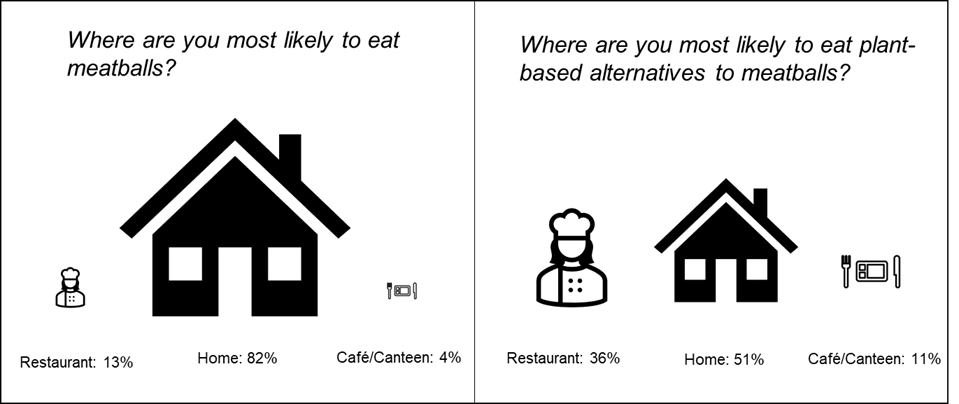
When respondents were asked what their single most likely place was to consume meatballs and plant-based alternatives, the difference was maintained. For meatballs, 8 in 10 consumers say this would be their home, and only 1 in 10 say it would be in a restaurant. But for plant-based alternatives to meatballs, the response was more divided. Half of the consumers rates the home, 1 in 3 rates a restaurant, and 1 in 10 rates a café/canteen as their most likely consumption locations. People likely feel more comfortable cooking spaghetti and meatballs themselves and so are less likely to pay to eat this meal out whereas preparing a plant-based version may be daunting for some in which case they would prefer the meal to be prepared by someone else.
So, both meatball and PB alternatives are most likely eaten at home, but consumers are also willing to eat PB alternatives when eating a meal out.
Testing PB meatballs in a digitally recreated home
This information was used to inform a Feast consumer study where we compared liking and emotional response to PB-meatballs in a traditional central location test (CLT) to a digitally recreated home environment. We also compared the PB-meatballs when tasted on their own versus when tasted in a tomato sauce. The home environment and the sauce were used to better reflect how consumers would eat in real life.

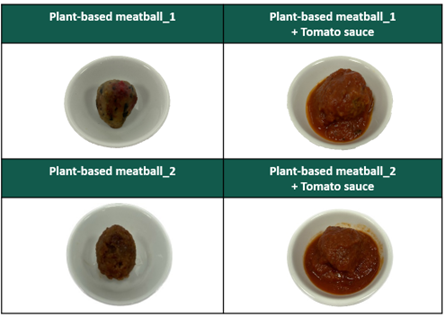
We found when the products were tasted in the digital home environment expected liking, appearance liking and texture liking scores for PB-meatball_1 were higher compared to the traditional CLT. Liking scores for PB-meatball_2 did not change between the environments.
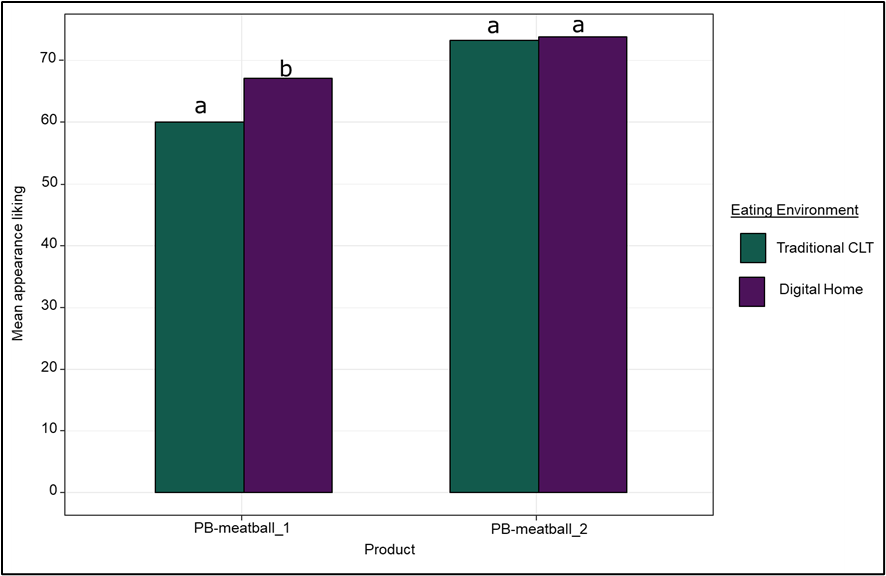
We also found that regardless of product, participants felt more loving, nostalgic, calm, pleasant, hungry, hopeful, and happy in the digital home environment compared to the traditional CLT.
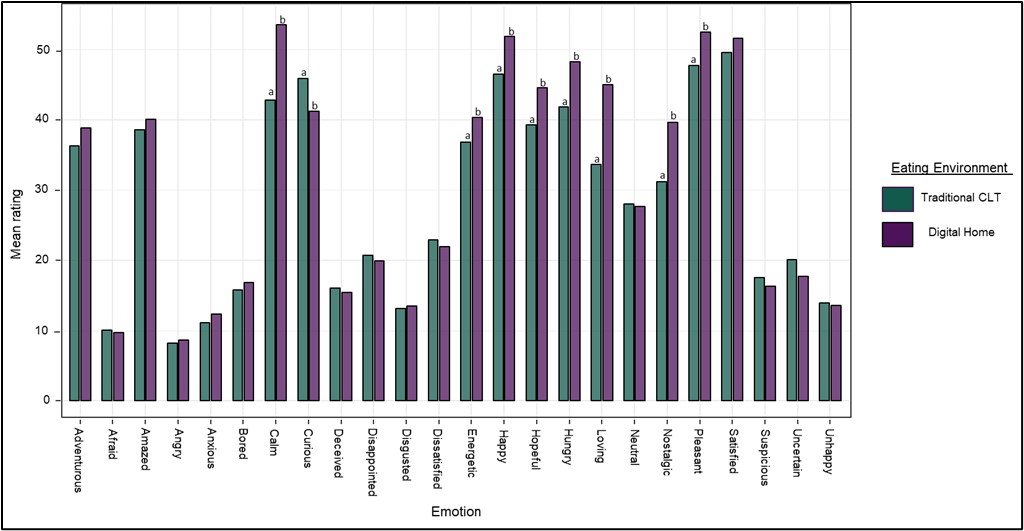
Adding sauce increases liking and positive emotions
When the PB-meatballs were tasted with tomato sauce, ratings for expected, overall, appearance, texture and flavour liking increased.
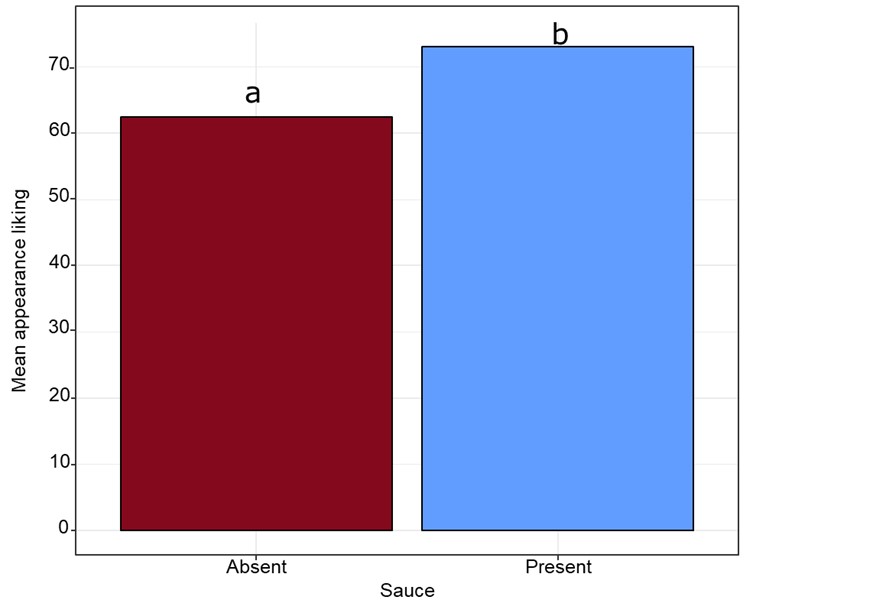
Tasting the samples with tomato sauce also increased feelings of several positive emotions including adventurous, amazed, energetic, happy, hungry, hopeful, loving, nostalgic and pleasant but also increased the feeling of anxiousness. Despite the sauce increasing liking scores it did not decrease feelings of negative emotions.
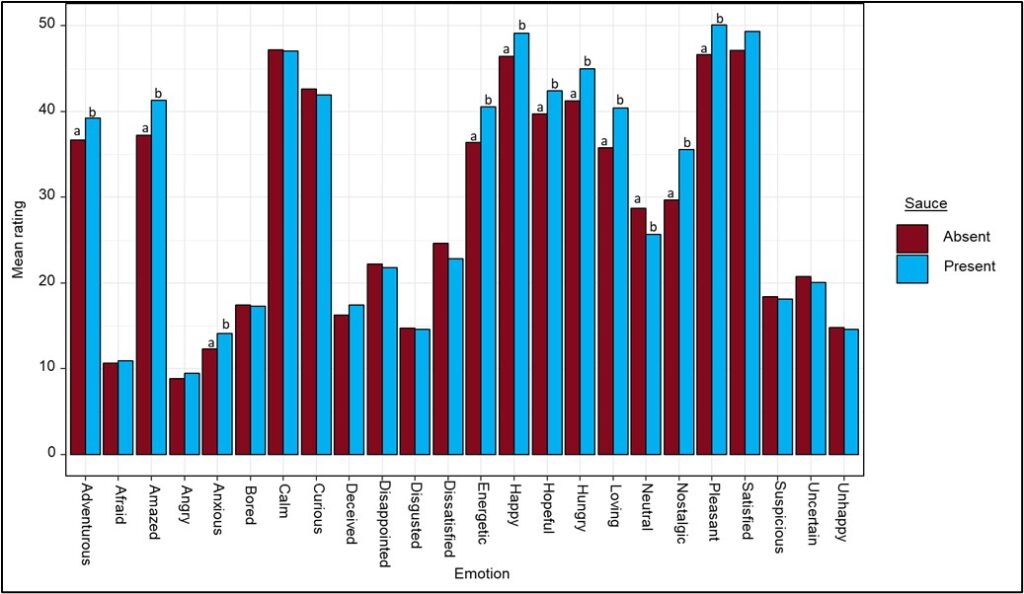
In this situation, the eating environment, and the way the product was consumed i.e., with or without sauce had an impact on liking and emotional response. This highlights the importance of considering how a product will be consumed in real life when conducing consumer research.
Learn more about situational appropriateness of plant-based meat alternatives
Elzerman, J. E., Keulemans, L., Sap, R., & Luning, P. A. (2021). Situational appropriateness of meat products, meat substitutes and meat alternatives as perceived by Dutch consumers. Food Quality and Preference, 88, 104108. https://doi.org/10.1016/j.foodqual.2020.104108
Michel, F., Hartmann, C., & Siegrist, M. (2021). Consumers’ associations, perceptions and acceptance of meat and plant-based meat alternatives. Food Quality and Preference, 87, 104063. https://doi.org/10.1016/j.foodqual.2020.104063
Motoki, K., Park, J., Spence, C., & Velasco, C. (2021). Contextual acceptance of novel and unfamiliar foods: Insects, cultured meat, plant-based meat alternatives, and 3D printed foods. Food Quality and Preference, 104368. https://doi.org/10.1016/j.foodqual.2021.104368

